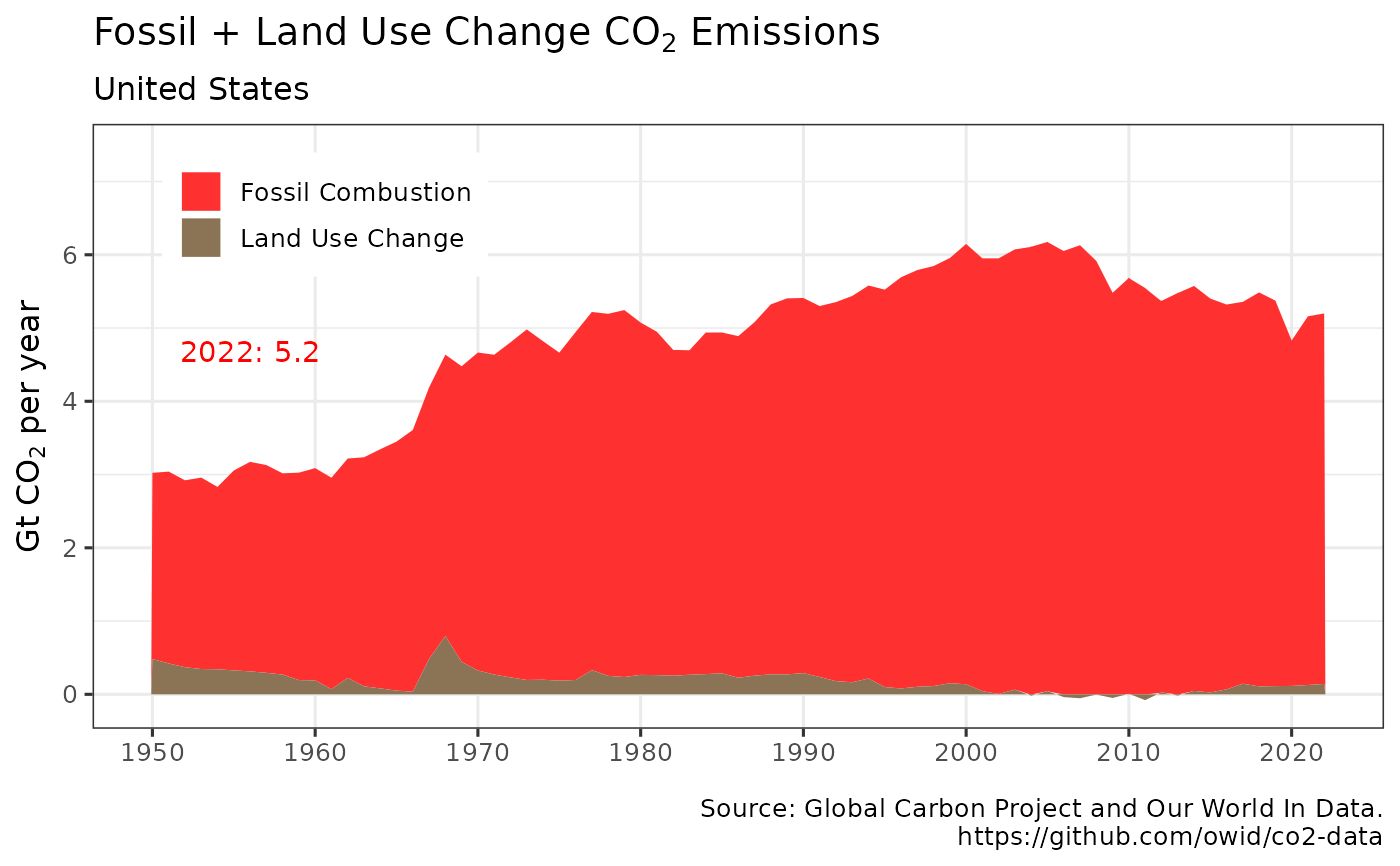Plots carbon dioxide emissions (including land use change) retrieved using get_emissions() with ggplot2. The output ggplot2 object may be modified. Alternative columns from the dataset may also be plotted.
Usage
plot_emissions_with_land(
dataset = get_emissions(),
start_year = 1900,
region = "World",
print = TRUE,
annot = TRUE,
title_expression = expression("Fossil + Land Use Change " * CO[2] * " Emissions"),
yaxis_expression = expression("Gt " * CO[2] * " per year")
)Arguments
- dataset
Name of the tibble generated by
get_emissions- start_year
Year to start plot at. Defaults to 1900. Data is available since 1750.
- region
ISO code of region to plot. Defaults to 'OWID_WRL' which signifies entire world.
(boolean) Display carbon dioxide emissions ggplot2 chart, defaults to TRUE. Use FALSE to not display chart.
- annot
(boolean) Include chart annotation with latest date and value, defaults to TRUE.
- title_expression
Chart title, defaults to CO2 emissions
- yaxis_expression
y-axis label, defaults to Gt CO2 emissions
Details
plot_emissions_with_land invisibly returns a ggplot2 object with a pre-defined carbon dioxide emissions (including land use change) chart using data from get_emissions.
By default the chart is also displayed. Users may further modify the output ggplot2 chart.
Author
Hernando Cortina, hch@alum.mit.edu
Examples
# \donttest{
# Fetch carbon dioxide emissions:
emissions <- get_emissions()
# Plot output (including land use change) using package's built-in ggplot2 defaults
plot_emissions_with_land(emissions)
 # Or just call plot_emissions_with_land(), which defaults to get_emissions() dataset
plot_emissions_with_land()
# Or just call plot_emissions_with_land(), which defaults to get_emissions() dataset
plot_emissions_with_land()
 # You can also select a region by name and starting year
plot_emissions_with_land(region='United States', start_year=1950)
# You can also select a region by name and starting year
plot_emissions_with_land(region='United States', start_year=1950)
 p <- plot_emissions_with_land(emissions, print = FALSE)
# Modify plot such as: p + ggplot2::labs(title='Anthropogenic Carbon Emissions')# }
p <- plot_emissions_with_land(emissions, print = FALSE)
# Modify plot such as: p + ggplot2::labs(title='Anthropogenic Carbon Emissions')# }
